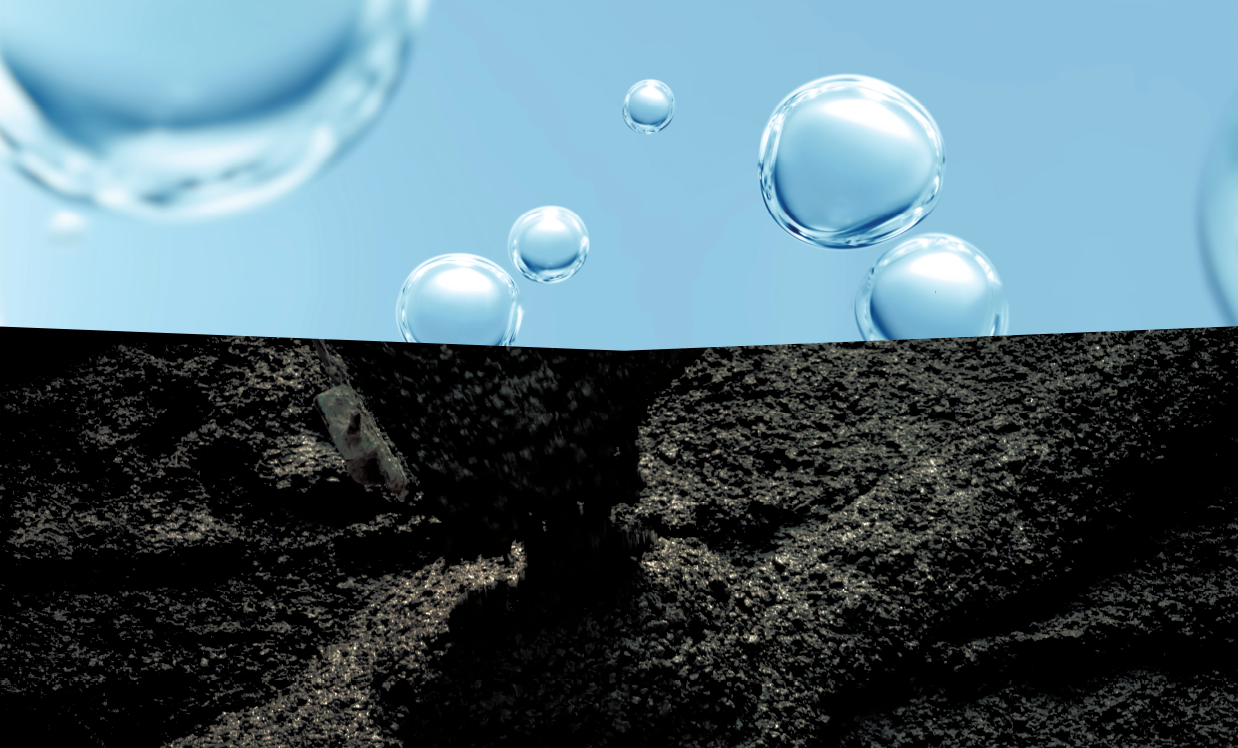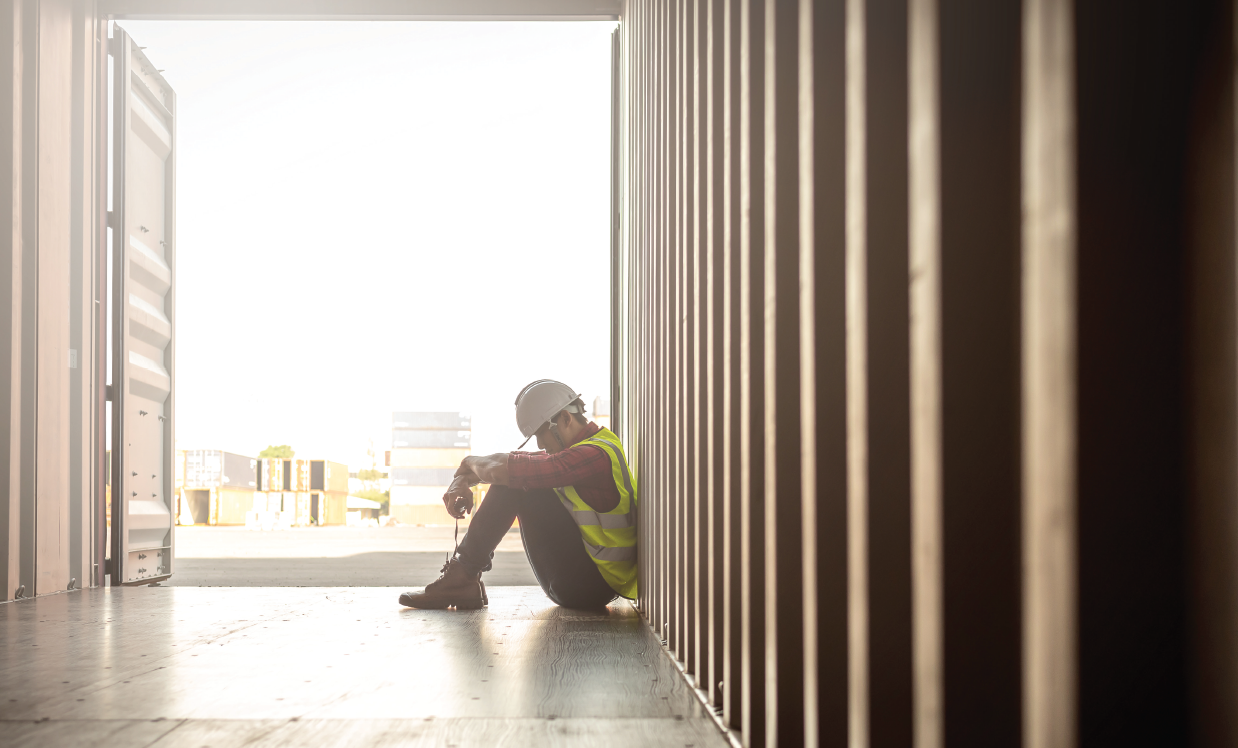
|
Newly poured and, in some instances, existing structural concrete roof decks present unique moisture migration problems for the roofing industry. This issue is not new—the industry has been facing it for years, and several authors and I have written numerous articles in Professional Roofing and other publications about it. Over time, the roofing industry has advanced its knowledge of moisture in concrete roof decks and how to best address it. And NRCA has updated its best practice guidelines for successfully dealing with structural concrete roof decks’ moisture.
Concrete basics
There are three general types of concrete: normal-weight structural concrete, lightweight structural concrete and lightweight insulating concrete.
Normal-weight structural concrete is what most people think of as concrete; it has a density of about 150 pounds per cubic foot and, when properly designed, can carry structural loads. Lightweight structural concrete has similar structural load-carrying capabilities as normal-weight structural concrete, but it has a density in the range of about 85 to 120 pcf.
Both normal-weight and lightweight structural concrete are produced by mixing large and small aggregates, Portland cement, water and, in some instances, other additives such as fly ash and various chemical admixtures. Admixtures can add entrained air to the concrete, accelerate the concrete’s curing, retain the concrete’s excess moisture and/or lengthen concrete’s finishing time. The use of admixtures typically is not visually identifiable in the field; microscopic analysis usually is necessary for post-application identification of admixtures.
The primary difference in composition of normal-weight structural concrete and lightweight structural concrete is the type of large aggregates used. Normal-weight structural concrete contains normal-weight aggregates such as stone or crushed gravel, which are dense and typically absorb no more moisture than about 2% by weight. Lightweight structural concrete uses lightweight, porous aggregates such as expanded shale, which will absorb about 5% to 25% moisture by weight. Lightweight aggregate needs to be saturated with moisture—it’s often submerged in ponds during storage—before concrete batching. As a result, lightweight structural concrete inherently contains much more water than normal-weight structural concrete.
Normal-weight structural concrete and lightweight structural concrete are used in cast-in-place concrete roof decks with removable forms; composite roof decks where metal form decks remain in place; precast and prestressed concrete planks and tees; and as a concrete topping surface over precast concrete planks and tees.
Once placed, normal-weight structural concrete and lightweight structural concrete cannot easily be differentiated from each other in the field. Visual identification is possible using magnification, typically a microscope used by a trained technician.
Lightweight insulating concrete, which many roofing professionals are familiar with as an insulating, slope-to-drain roof deck topping, typically has a density in the range of 20 to 40 pcf. Lightweight insulating concrete is further differentiated from structural concrete in that lightweight insulating concrete is “nonstructural,” meaning it has limited structural load-carrying capabilities. Lightweight insulating concrete typically is placed over a form deck or other structural roof deck type for support.
It is important to note lightweight insulating concrete roof decks are not experiencing the same moisture migration problems as structural concrete roof decks. The roofing industry has long understood and addresses moisture release in lightweight insulating concrete roof decks with bottom- and/or top-side venting. Based on this, the following information should not be considered applicable to lightweight insulating concrete; it is intended to only apply to normal-weight and lightweight structural concrete.
For articles related to this topic, see “What we know now,” March 2020 issue and “The quest for dryness,” June 2017 issue.
Moisture and drying
Water is a basic component of a concrete mix design. Upon batching of a concrete mix, a chemical reaction occurs between water and Portland cement creating a cementitious paste that bonds to and fills the gaps between the batch’s large and small aggregates to form a solid concrete mass. This chemical reaction is referred to as hydration.
Hydration initially occurs rapidly then continues to a lesser extent over time. Hydration can continue well beyond the concrete’s 28-day design cure period. This 28-day period is a standard time for testing and evaluating concrete’s compressive strength for structural load capacity. There is little to no correlation between the 28-day design cure period, concrete’s moisture content and its readiness to be covered with a roof system.
Concrete mix designs and batches typically contain considerably more water than necessary for proper hydration. For example, a normal-weight structural concrete mix with a water-to-cement ratio of 0.45 contains about 30 gallons of water per cubic yard of concrete. About half of this water will be consumed during the concrete’s hydration and curing process. The remaining water, referred to as “free water,” is left to dissipate by evaporation and moisture vapor transport over time.
In some instances, additional water beyond that prescribed by the mix design is added to a concrete batch before placement to facilitate transportation and ease placement. This additional water increases the amount of free water that needs to dissipate by evaporation and moisture vapor transport.
Research conducted by the Portland Cement Association, Skokie, Ill., for the flooring industry provides some insight into the amount of time it takes for a newly placed concrete slab to dry. PCA’s research shows measuring concrete’s internal relative humidity can be a reliable means of assessing concrete’s relative dryness and appropriateness to receive floor coverings. Relative humidity values of about 75% or lower typically are considered acceptable to prevent blistering on moisture-sensitive and nonbreathable floor coverings. The research has shown normal-weight structural concrete floor slabs may reach acceptable levels in about 90 days and lightweight structural concrete floor slabs may take about six months to reach the 75% relative humidity level. This research was conducted indoors, with test specimens not subjected to rewetting. The longer drying time for lightweight structural concrete floor slabs is an indication of the greater amount of water contained in lightweight structural concrete design mixes.
Unlike the flooring industry’s 75% relative humidity threshold, the roofing industry has no established guideline for concrete’s dryness before roof system application. However, because the flooring industry’s threshold considers moisture-sensitive materials and blistering potential—both of which also are considerations for roof systems installed over concrete roof decks—the flooring industry’s guideline can serve as a practical basis.
Also, a membrane roof system on a concrete roof deck, such as a vinyl floor covering, for example, functions as a vapor retarder on the top surface of a concrete slab preventing upward moisture release.
That said, concrete roof decks and concrete floor slabs differ in two fundamental aspects. First, concrete floor slabs typically are protected from weather during curing and drying. Concrete roof decks, on the other hand, are exposed to weather and rewetting by precipitation. Rewetting significantly can lengthen the drying time of concrete roof decks.
Second, the moisture vapor transport characteristics are different between concrete floor slabs and concrete roof decks. With floor slabs, there usually is little to no difference in the ambient conditions between a concrete slab’s bottom and top sides, which means there usually is little to no temperature-derived vapor pressure differential across the slab that would move any moisture vapor from within the slab.
Conversely, with concrete roof decks, the bottom side of a roof deck typically is exposed to conditioned space while the top side experiences changing temperatures, humidity and wind, all of which can affect moisture vapor transport. Temperature differentials across the cross-section of a roof assembly can result in net vapor pressure drive in the direction from warm to cold.
Therefore, during periods of cool or cold outside temperatures, residual moisture vapor from the concrete’s free water can be forced outward into the roof system. Excessive moisture accumulation in a roof system can result in damage to moisture-sensitive roof system components and affect roof system performance.
During periods of hot outside temperatures, the concrete’s residual moisture vapor can be forced downward into a building’s occupied space provided a concrete roof deck was not poured on a metal form deck. With concrete roof decks poured in metal form decks that remain in-place, the metal form deck can act as a vapor retarder restricting inward moisture vapor transport. When conditions result in an inward direction of vapor drive, a building’s HVAC system typically helps manage the driven moisture. Mechanical cooling processes, such as air conditioning, can remove large amounts of moisture from air.
Why now?
A question frequently raised when discussing moisture migration problems associated with concrete roof decks is why is this an issue now when the industry has successfully installed roof systems over structural concrete roof decks for more than 100 years? There are several answers.
First, building construction schedules are more compressed than ever, and the push to get buildings enclosed and watertight sooner has intensified. Once roof systems are installed, buildings’ interiors can begin to dry down sooner and then finishing materials can be installed sooner. The irony of this is roofing contractors often are pressured to install roof systems over concrete decks sooner to expedite the curing and drying of concrete floor slabs to allow for expedited floor covering installation.
Secondly, legacy roof system types, such as built-up membrane roof systems, usually were installed solidly mopped in hot bitumen to concrete roof decks or installed over rigid board insulation, which was solidly mopped in hot asphalt. In addition to being a roof system adhesive, hot bitumen or asphalt functions as a low-perm-rated vapor retarder, restricting moisture vapor transport into roof systems. With roof system types evolving away from solidly mopped BURs to spot- or ribbon-adhered or mechanically attached roof systems, the vapor retarder provided by the continuous mopping of hot bitumen or asphalt no longer is present.
Finally, many current roofing materials and products are more sensitive to moisture than legacy roofing products. Legacy rigid board roof insulation products, such as fiberglass board, wood fiberboard and perlite board, were able to take on and release small amounts of free water and water vapor without deteriorating. Current-generation faced, rigid board products are more moisture-sensitive, and current wood fiberboard and perlite board products are more moisture-sensitive because of their recycled content.
Roofing industry research
Roofing contractors have shared their experiences with concrete decks and moisture-related problems with NRCA, and NRCA has participated in and conducted several research projects that provide additional insight.
In 2010, NRCA and SRI Consultants Inc., Middleton, Wis., conducted insitu moisture readings in concrete roof decks below existing roof systems where moisture-related problems had been reported. In each of the roof assemblies analyzed, large amounts of moisture were observed within the roof systems though little to no roof system leakage was reported or found. Relative humidity values ranging from 63% to 99% were recorded in these concrete roof decks, which ranged from 4 to 7 years old. This moisture is believed to be from the original construction.
From 2016-19, NRCA participated in and cofunded a large, multiphase research project at SRI Consultants with the Chicagoland Roofing Council, Chicago Roofing Contractors Association and the Roofing Alliance. The Canadian Roofing Contractors Association; GAF, Parsippany, N.J.; Johns Manville, Denver; and SOPREMA® Inc., Wadsworth, Ohio, provided additional funding and technical support.
In Phase 1 of the research, normal-weight and lightweight structural concrete roof deck mockups were constructed outdoors and indoors; the decks were heavily instrumented. The outdoor mockups were subject to rewetting via precipitation at the test site while the indoor mockups were representative of weather-protected roof decks not subject to rewetting. Specimens also were cast to develop hygrothermal material properties for normal-weight and lightweight structural concrete, and that data was used to develop a basic hygrothermal model addressing moisture mitigation from structural concrete roof decks.
In Phase 2, additional indoor normal-weight and lightweight structural concrete roof deck mockups were constructed and roof systems were added with and without above-deck vapor retarders 28 days after concrete placement. A laboratory-controlled upward pressure drive was induced to the mockups, and moisture gain in the roof systems was measured. This data was used to further expand and correlate the hygrothermal model from Phase 1.
Following are some key findings from phases 1 and 2 of the research:
The indoor normal-weight and lightweight structural concrete roof deck mockups exhibited gradual decrease in internal relative humidity because of hydration and evaporation, and the outdoor mockups experienced relative humidity loss and periods of increased relative humidity resulting from rewetting by precipitation. Also, though the mockups exhibited visual dryness in their top surfaces, internal relative humidity values remained relatively high.
Hygrothermal material property testing of normal-weight and lightweight structural concrete shows lightweight structural concrete has about half the water vapor transmission rate than normal-weight structural concrete. Considering lightweight structural concrete is batched with more water than normal-weight structural concrete, this accounts for lightweight structural concrete’s significantly longer drying rate. Also, the water vapor transmission rates for normal-weight and lightweight structural concrete tested 60 days after concrete placement were noticeably lower than water vapor transmission rates after 28 days. This shows concrete has a diminishing ability to release its free water as hydration and curing continue.
The hygrothermal modeling showed roof systems without a vapor retarder installed over normal-weight and lightweight structural concrete roof decks 28 days after concrete placement exhibited significant moisture accumulation from the concrete roof decks. The roof systems on the mockups with a vapor retarder exhibited only minimal roof system moisture accumulation.
In 2018, NRCA tested the effectiveness of porosity-inhibiting concrete admixtures, sometimes referred to as moisture vapor reduction admixtures. NRCA obtained core specimens of newly poured cast-in-place concrete from a building under construction. This test project included multiple concrete roof decks, several with a moisture vapor reduction admixture and one without. The concrete mix design was reported to be similar for all the concrete decks with the moisture vapor reduction admixtures being the known variable.
Testing results showed the concrete roof deck without the moisture vapor reduction admixture had a permeability value similar to the normal-weight structural concrete specimens from the SRI Consultants’ research.
The test data from the moisture vapor reduction admixture specimens showed permeability values greater than those of the specimens without the moisture vapor reduction admixtures; this indicates the moisture vapor reduction admixture specimens are more “vapor open” than the other specimens. These test results contradict claims that a moisture vapor reduction admixture minimizes concrete’s ability to pass and release moisture vapor.
Did you know? Contract provision language addressing roof deck acceptance is provided on NRCA’s website at nrca.net/legal. This language also can be adapted to roof deck acceptance communications with prime contractors, construction managers and building owners.
NRCA’s recommendations
NRCA maintains its longstanding position that a roofing contractor should not decide when a newly placed normal-weight or lightweight structural concrete substrate is ready to be covered with a new roof system. Direction on a concrete deck’s readiness should be dictated by a building’s structural engineer, general contractor, concrete supplier and concrete placement contractor, each of whom likely has more knowledge than the roofing contractor about the specific concrete mix design’s curing and moisture release rates. It also may be useful for these parties to consult the building’s project or roof system designer and the roof system manufacturer.
NRCA’s premise and position is consistent with the flooring industry. For resilient tile and textile floor coverings and coatings, floor covering manufacturers generally require quantitative moisture testing be performed before floor covering installation on concrete. ASTM F2170, “Standard Test Method for Determining Relative Humidity in Concrete Floor Slabs Using in situ Probes,” often is used for this purpose.
NRCA also recommends roofing contractors limit their acceptance of concrete roof decks to the top surface of the roof deck being visually dry and broom clean. These criteria also can be used for other roof deck types. Broader roof deck criteria places additional, unreasonable liability on roofing contractors; a roofing contractor may have only limited knowledge of and control over aspects of a roof deck and building structure.
NRCA recommends roof system designers use caution when specifying the installation of membrane roof systems over newly poured normal-weight and lightweight structural concrete roof decks. When adequate dryness of concrete roof decks cannot be reasonably ensured, NRCA recommends a well-adhered, low-perm-rated vapor retarder be specified for installation directly over the concrete roof deck. Then, an adhered or loosely laid ballasted roof system can be specified over the vapor retarder, preferably installed the same day or within several days of vapor retarder installation. Roof system types that involve mechanical fasteners that would penetrate the vapor retarder should be avoided to reasonably ensure vapor retarder performance. The purpose of the vapor retarder is to isolate the concrete deck’s free water within the concrete and minimize the potential for moisture vapor transport into the roof system.
NRCA also maintains its longstanding recommendation the use of curing and finishing compounds be avoided in placing and finishing structural concrete roof decks as these are known to retard moisture release and can affect adhesion of roofing materials. Also, NRCA suggests roof system designers minimize the use of materials and products with organic content over concrete roof decks to minimize the potential for microbial growth in the event moisture from a concrete roof deck infiltrates into the roof system. Examples of roofing products with organic content include fiberglass-reinforced, cellulosic mat-faced polyisocyanurate; perlite board; and wood fiberboard. Coated, fiberglass mat-faced polyisocyanuratete insulation is preferred over fiberglass-reinforced, cellulosic mat-faced polyisocyanurate in concrete roof deck applications.
For reroofing situations over existing concrete roof decks where there is evidence of concrete deck-related moisture problems, NRCA suggests roof system designs similar to those recommended for newly placed concrete roof decks.
Closing thoughts
Currently, newly poured and, in some instances, existing structural concrete roof decks present unique moisture migration problems and potential liability for the roofing industry. You should take special care to not assume responsibility and liability for moisture in normal-weight structural concrete and lightweight structural concrete decks.
Additional information about moisture migration in roof assemblies is provided in the Condensation and Air Leakage Control section of The NRCA Roofing Manual: Architectural Metal Flashing and Condensation and Air Leakage Control. Additional information about concrete roof decks and vapor retarders is provided in Chapter 2—Roof Decks and Chapter 3—Air and Vapor Retarders, respectively, of The NRCA Roofing Manual: Membrane Roof Systems.
MARK S. GRAHAM is NRCA's vice president of technical services.



